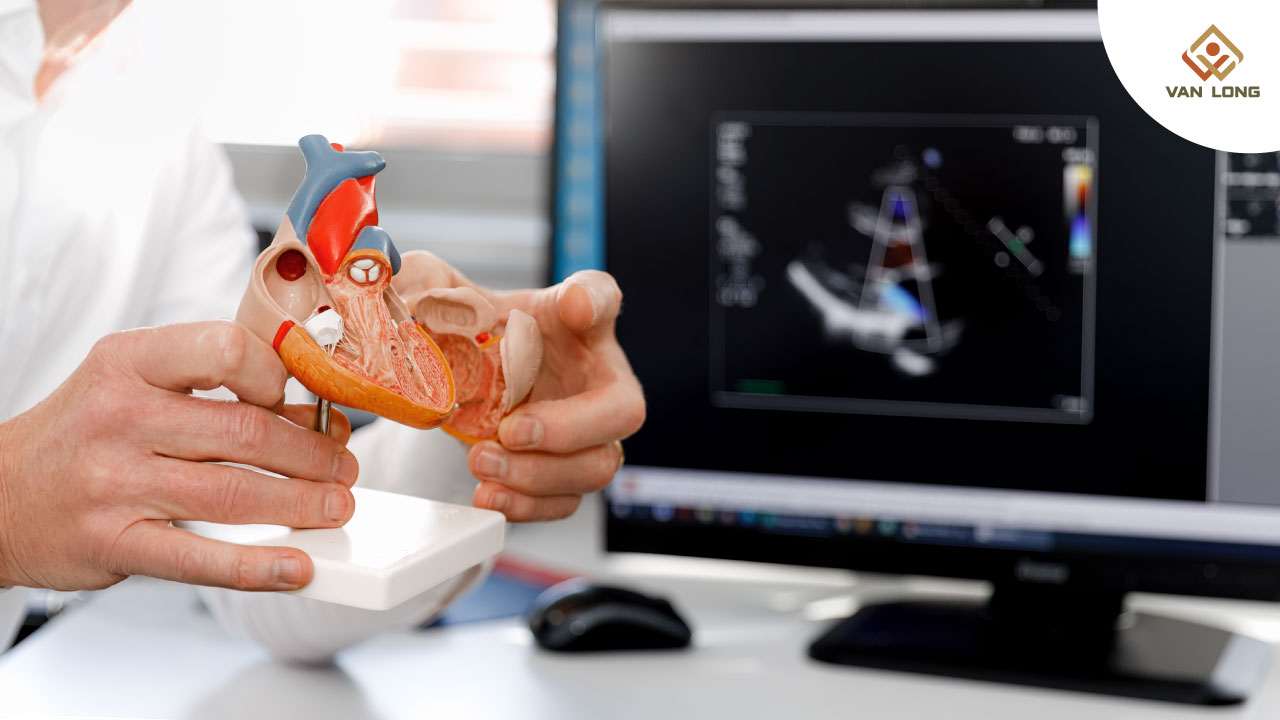Trái tim của chúng ta không chỉ đơn thuần là một khối cơ bơm máu. Nó còn được bao bọc bởi một lớp màng mỏng gọi là màng ngoài tim – đóng vai trò như một chiếc “áo giáp” giúp bảo vệ tim khỏi chấn động, nhiễm trùng và giảm ma sát khi tim co bóp. Giữa hai lớp màng này luôn tồn tại một lượng dịch rất nhỏ, chỉ vài chục mililit, đóng vai trò như dầu bôi trơn.
Tuy nhiên, khi lượng dịch này tăng bất thường, tình trạng tràn dịch màng tim sẽ xảy ra. Đây là một bệnh lý tiềm ẩn nguy hiểm, có thể diễn biến âm thầm hoặc gây biến chứng nhanh chóng, dẫn đến tình trạng chèn ép tim và tử vong nếu không xử trí kịp thời.
Điều đáng nói là nhiều bệnh lý tim mạch – bao gồm cả tràn dịch màng tim – có thể được phát hiện sớm thông qua việc theo dõi chỉ số huyết áp. Bởi lẽ, sự thay đổi bất thường của huyết áp đôi khi phản ánh những vấn đề sâu hơn của hệ tuần hoàn. Việc sử dụng các thiết bị theo dõi huyết áp tại nhà như máy đo huyết áp điện tử hoặc máy đo huyết áp tự động sẽ giúp mỗi người chủ động hơn trong việc bảo vệ trái tim của mình.

Tràn dịch màng tim (tiếng Anh: Pericardial Effusion) là tình trạng tích tụ dịch bất thường trong khoang màng ngoài tim – khoảng trống giữa hai lớp màng bao quanh tim.
Ở trạng thái bình thường, khoang này chứa khoảng 15–50 ml dịch trong suốt, giúp giảm ma sát khi tim co bóp. Khi dịch tăng lên hàng trăm mililit, đặc biệt nếu tăng nhanh, áp lực bên trong khoang sẽ đè ép lên thành tim, khiến tim khó giãn nở và không thể bơm máu hiệu quả.
Các dạng tiến triển:

Bệnh có nhiều nguyên nhân, nhưng nhìn chung được chia thành các nhóm sau:
Ung thư phổi, ung thư vú, lymphoma hoặc khối u nguyên phát ở tim có thể gây tràn dịch màng tim. Cơ chế là do khối u xâm lấn hoặc gây viêm mạn tính, làm tăng tiết dịch.
Lupus ban đỏ hệ thống, viêm khớp dạng thấp, hội chứng Sjögren… có thể khiến hệ miễn dịch tấn công màng tim.
Tai nạn giao thông, chấn thương thể thao hoặc các thủ thuật can thiệp (đặt máy tạo nhịp, phẫu thuật tim hở) có thể làm máu và dịch rò rỉ vào khoang màng tim.
Suy giáp, suy gan, suy thận, xơ gan, biến chứng do xạ trị, hoặc vô căn (không tìm ra nguyên nhân).

Ở giai đoạn sớm, người bệnh có thể không cảm nhận được gì đặc biệt. Nhưng khi lượng dịch tăng, các triệu chứng sau sẽ xuất hiện:
Nếu dịch chèn ép vào cơ quan lân cận:
Tình huống cấp cứu: Đau ngực dữ dội, khó thở tăng nhanh, huyết áp tụt, mạch yếu. Đây có thể là dấu hiệu của chèn ép tim – biến chứng tối cấp.
Khi áp lực khoang màng tim quá cao, tim không thể giãn ra để nhận máu, dẫn đến tụt huyết áp, giảm lượng máu ra khỏi tim. Nếu không được can thiệp, tim có thể ngừng đập trong vài phút.
Do cung lượng tim giảm nghiêm trọng, các cơ quan không được cung cấp đủ oxy, gây suy đa tạng.

Bác sĩ sẽ kết hợp
Trường hợp dịch ít, không triệu chứng, bác sĩ sẽ hẹn tái khám và theo dõi định kỳ.

Không phải mọi trường hợp tràn dịch màng tim đều phòng ngừa được, nhưng có thể giảm nguy cơ bằng cách:
Tràn dịch màng tim là bệnh lý tiềm ẩn nguy hiểm, có thể gây tử vong nhanh chóng nếu diễn biến thành chèn ép tim. Hiểu rõ nguyên nhân, triệu chứng và cách phòng ngừa sẽ giúp mỗi người chủ động hơn trong việc bảo vệ trái tim.
Dù không thể thay thế hoàn toàn vai trò của bác sĩ, việc tự theo dõi chỉ số huyết áp tại nhà bằng máy đo huyết áp – đặc biệt là các dòng máy đo huyết áp điện tử tiện dụng – vẫn là một biện pháp hỗ trợ hiệu quả để phát hiện sớm những vấn đề bất thường, từ đó kịp thời khám và điều trị.
Hãy duy trì lối sống lành mạnh, kiểm soát tốt các yếu tố nguy cơ, và đừng bỏ qua những tín hiệu dù nhỏ nhất từ cơ thể – bởi đôi khi đó chính là lời cảnh báo sớm cho sức khỏe của bạn.
——————————
CÔNG TY TNHH PHÁT TRIỂN THƯƠNG MẠI DỊCH VỤ VÂN LONG
YOUR NEEDS - OUR BUSINESS
Hotline: (028) 3526 2468 / 098.484.0440
Email: cskh@vl-groups.com
Website: www.vl-groups.com
Địa chỉ:
- Văn phòng HCM: Tòa nhà Fosco, D35 + D36 - 40 Bà Huyện Thanh Quan, P.Xuân Hòa, TP. HCM
- Trung tâm bảo hành: 373/14 Nguyễn Kiệm, P.Đức Nhuận, TP.HCM
- Văn phòng Hà Nội: Khu VP Hồng Hà, 38.3/1 Ngõ 109 Trường Chinh, P.Phương Liệt, Q.Thanh Xuân, Hà Nội
- Kho Tổng: 938 Quốc Lộ 1A, P.Linh Xuân, TP.HCM
🌼 Shopee: https://shopee.vn/vanlonggroups
🌼 Tiktok: https://www.tiktok.com/@thietbichamsocsuckhoe
🌼 Tiki: https://tiki.vn/cua-hang/cham-soc-suc-khoe-van-long
🌼 Lazada: https://www.lazada.vn/shop/van-long-our-needs-your-business